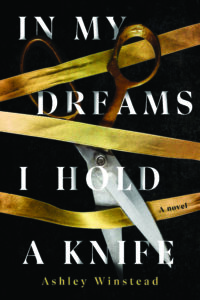There’s arguably no question that animates crime fiction more than the question of guilt. Because one of the genre’s central aims is an epistemological one—to discover and understand transgressive events, usually crimes, and uncover who’s responsible and why—it’s often structured around a process of gradual enlightenment. One of the most seductive promises it makes is that by the end of a story, readers will know something new and important: more often than not, it’s who’s guilty and what motivated them. This knowledge, and the comforting certainty it brings (that the world is knowable; that guilt is assignable; that people’s motives are legible), are some of the biggest payoffs. We could talk at length about the ways many crime books subvert this promise, but nevertheless, it’s a convention of the genre.
Crime fiction’s obsession with knowing—uncovering, realizing, confessing—and its promise of eventual certainty may explain why it’s such an attractive medium through which to explore the more nebulous and hard-to-pin questions of guilt associated with institutional and ideological harms.
It’s been decades since Foucault argued power is everywhere—a regime of truth that pervades society rather than a central controlling figure—but the challenge of representing this dispersed power and holding it accountable remains evergreen. In particular, as our society’s understanding of systemic injustice has grown in recent years—as more and more people become familiar with realities like white privilege, the classism wielded by universities, the ways capitalist economies grind the most vulnerable to serve the wealthy—and we’ve increasingly accepted that even our most passive participation in these systems has consequences, we are all rendered, to some degree, guilty.
In a world that has come to understand guilt more and more as a collective thing—collective and correlative, not always direct and causal—what happens to our ability to cleanly assign guilt and map motives in fiction? How do you represent institutional and ideological antagonists, let alone interrogate or indict them? There’s much to say about how recent crime fiction is responding to these challenges, but I’ll limit my observations to one on form and one on content.
On form: In scholar Lisa Siraganian’s study of how literature has depicted corporate personhood throughout the years, she shows that in trying to represent the abstract concept of a corporate person, novels often figured corporations as literal walking, talking people. Similarly, in a wave of recent crime novels, institutions (i.e., elite higher ed, the publishing industry) and ideologies (i.e., misogyny, toxic masculinity, white supremacy) are represented through avatars, literal people or groups of people whose power and influence are more than the sum of their parts, and for whom the main character’s magnetic attraction is both their raison d’être and the source of their destruction. Complicity itself is rendered as a kind of mental poison that rots characters from the inside out, bending them toward violence and tragedy (and in one recent thriller I won’t name to avoid spoilers, it’s literally a poison).
Though centered around shocking interpersonal violence like much other crime fiction—murders, stalkings, beatings—these stories are as preoccupied with mapping whether and how their characters have been complicit in abstract, systemic wrongs as they are with uncovering who is guilty of the more traditional violence. To borrow an example from my forthcoming thriller in which a young woman named Heather Shelby has been murdered, the question the book wrestles with is not simply who killed Heather, but a wider question: how did every character kill her in their own way? In these books, guilt is collective.
By connecting interpersonal violence to institutional/ideological violence and representing these abstract systems through living, breathing avatars, recent crime fiction has been able to accomplish a feat frustratingly rare outside of art: they render invisible power and harms visible, and in some cases, even succeed in holding it accountable.
The books do this by making undeniable the violent consequences of “harmless” thoughts and feelings, using the conventions of crime fiction—that is, the reader’s expectation that they’re searching for guilt, and thus their hypersensitivity to it—to turn entire institutions and belief systems into suspects, interrogating them as cleanly and satisfyingly as the genre routinely does human murderers.
In terms of content, there has been an exciting spike in crime fiction exploring complicity in recent years, much of it centering millennial characters (interesting insofar as millennials belong to a generation that has performed awareness of systemic injustices in very visible and often self-congratulatory ways). The most complicit characters in these novels are often their main focalization characters. In some, the characters actively seek to uncover who’s guilty of the book’s crime, and in the process come to question their own actions and complicity. In others, the characters resist knowledge, too terrified or fragile to confront their own guilt.
Because in some way each of these novels’ main characters has blood on their hands, by using crime fiction’s structure of gradual enlightenment, the books actually model the process of coming to terms with your own guilt. Powerfully, guilt is not only collective but also personal, owned and deeply felt.
Here are seven recent crime novels that stand out to me for the ways they grapple with institutional and ideological complicity.

For the Best by Vanessa Lillie
The novel’s main character, Juliet Worthington-Smith, thinks of herself as more than the victim of a false murder accusation—in her heart, she thinks of herself as a hero, a philanthropic champion of progressive causes. The story is brilliant for the way it allows the reader to see how Juliet’s self-perceptions don’t match reality, from her inability to recognize her drinking problem to her lack of social awareness. When Juliet is accused of killing her friend Dr. Terrance Castle, she sets off to find the real killer, though frustratingly, her investigation keeps pointing back to herself. Juliet’s burgeoning understanding of her own complicity is all the more powerful because Dr. Castle was championing a new approach to crime, an ideological revolution that requires people to first recognize their own role in perpetuating broken systems (a belief Juliet supposedly shares, but consistently ignores).

The Divines by Ellie Eaton
In this novel about a tragedy at an all-girls British boarding school, the “we” the main character Josephine uses whenever she recalls her past is a powerful word: “we used to,” “we hated,” “we never.” It reflects the way Joe and her friends came to think and act and harm collectively, becoming a single monolith, the Divine, a group that includes their wealthy mothers and generations of well-bred women before them. The “we” also shields each girl from individual responsibility, something adult Joe still grapples with. Years later, contemplating how deeply the townies hated her and her fellow privileged boarding school students, how cruelly they themselves treated girls who refused to perform to class and gender norms, Josephine still can’t put her finger on “what we were guilty of.” This is a novel about coming to terms not only with your role in past violence, but in the perpetuation of power—however, it’s written in such a dreamy, restrained style that you almost don’t notice how fully you’re immersed in the logic of the “Old Girls’” until sharp, harsh moments crack the veneer.
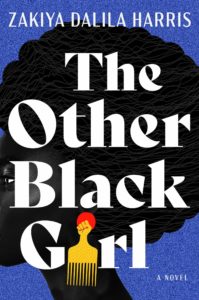
The Other Black Girl by Zakiya Dalila Harris
With its George Schuyler-esque twist, this novel has one of the most nuanced explorations of complicity I’ve read. Harris’s main character is Nella, a Black editorial assistant at a predominantly white publishing house, who’s thrilled when Hazel, another Black woman, is hired in her department—until Nella is terrorized by an anonymous note-leaver, and suspects Hazel wants to climb over her to the top. Even as Nella works out how to respond to racism from her colleagues, she begins to question the ways she herself has benefitted from economic privilege and taken for granted certain classist ways of thinking endemic to the publishing industry. Harris gives literal shape to white supremacy by figuring it as a shadowy, amorphous web of antagonists, far scarier than the individuals who compose it, and complicity is also made literal (though again, no spoilers). Harris’s web of antagonists, like the racism they embody, is so insidious, so omnipresent, that no one, no matter how hard they try, can escape.
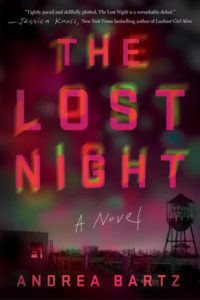
The Lost Night by Andrea Bartz
Like quite a few books on this list, Bartz’s novel centers a millennial protagonist, Lindsay Bach, who reunites with old friends. Her confrontation with the past raises questions about an old suicide—or was it a murder?—that haunts Lindsay, both because it was her best friend Edie who died and because her memory of how the night played out is different from her friends’. Compelled by a growing suspicion that she herself may have played a part in Edie’s death, Lindsay uses her professional fact-checker skills to investigate. As the story progresses, she must confront the damning truth that whether or not she did actually kill Edie, she could have. The same devotion to toxic ideas about what makes women valuable and desirable that cause Lindsay to worship Edie in the first place also feed her own self-loathing, creating a compulsion to hurt herself and others that’s as lethal as any bullet.
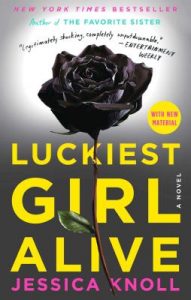
Luckiest Girl Alive by Jessica Knoll
You’re supposed to hate and maybe pity Knoll’s main character TifAni FaNelli. Not simply because she’s a cruel, shallow woman, but because the novel makes it clear she’s that way (and miserable for it) because she so wholeheartedly succumbed to the ideology that gutted her in her youth: the poisonous idea that some people are superior to others, and the strong should prey on the weak. This ideology also underwrites the novel’s horrific crime, and the story is brilliant for showing you how the antagonists, TifAni included, are both victims of and complicit in this belief system. It’s no surprise that Knoll says she was inspired by Gone Girl: every time Amy Dunne’s “cool girl” speech rings true for readers, it’s a tiny recognition of sameness, of complicity, and readers can no longer distance themselves—and the same holds true for Ani, for all her flaws.
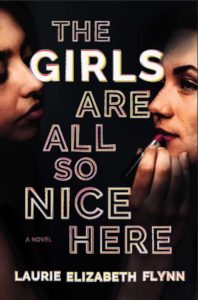
The Girls Are All So Nice Here by Laurie Elizabeth Flynn
When Ambrosia Wellington arrives at Wesleyan her freshman year and meets Sloane “Sully” Sullivan, she’s meeting both a person and a walking, talking embodiment of misogyny. It’s hard at first to see this, because Sully wears a cloak of female empowerment. But watching Amb clone herself after Sully—literally and figuratively fashioning herself into an agent of misogyny—and wreak escalating harm on others is like watching a car crash in slow motion. This book is almost a textbook study of how toxic ideologies seduce people, and it’s especially notable for its commitment to an ending so fair and just it’s almost a fairytale—only a very, very dark one.
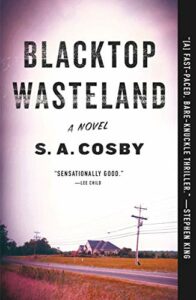
Blacktop Wasteland by S.A. Cosby
One of the central questions that propels Blacktop Wasteland is whether its main character, Beauregard Montage, is a good man. It’s impossible not to like Beau, who is smart, funny, resourceful, and, at least in the beginning, a good father and husband. But from the very first scene, when Beau refuses to let someone go until they prostrate themselves before him, the reader sees there’s something festering inside him. What this is, it turns out, is “a sickness” that Beau says “rots you from the inside out”: not just a propensity toward violence but a love of it, a certain kind of masculinity Cosby repeatedly describes as literally toxic. It’s a way of being in the world Beau inherited from his father and looks to be passing to his own sons. But the novel is profoundly empathetic, brilliant for its ability to depict its characters from a bird’s eye view—showing how they’ve come to be the people they are because of forces outside their control: generational poverty, racism, exploitative capitalism. Even as you can see that the seed of each character’s tragedy lies in their complicity with the very ideologies and forces that repeatedly ruin their lives, it’s hard, like it is for Beau, to imagine any other choice.
***


